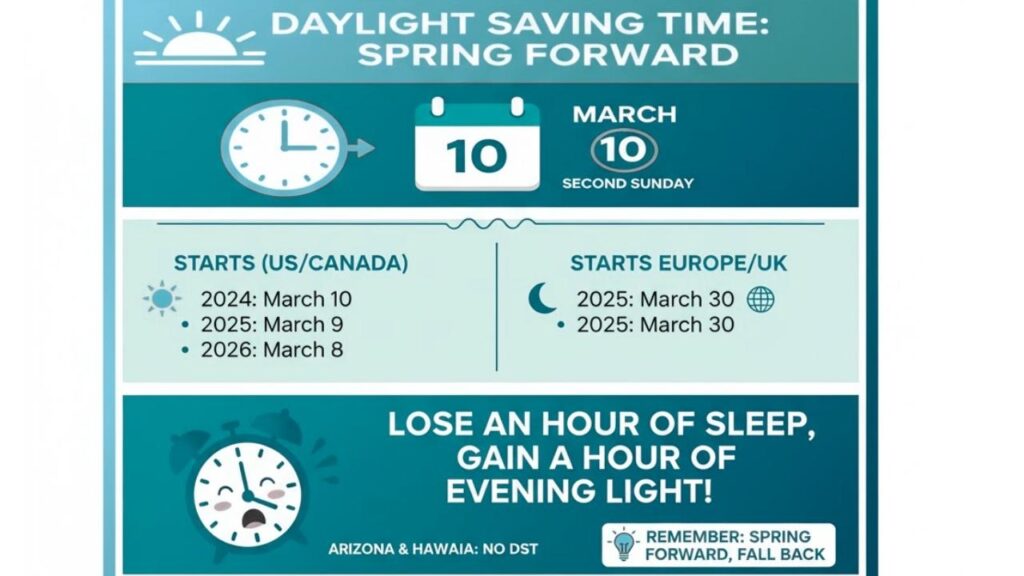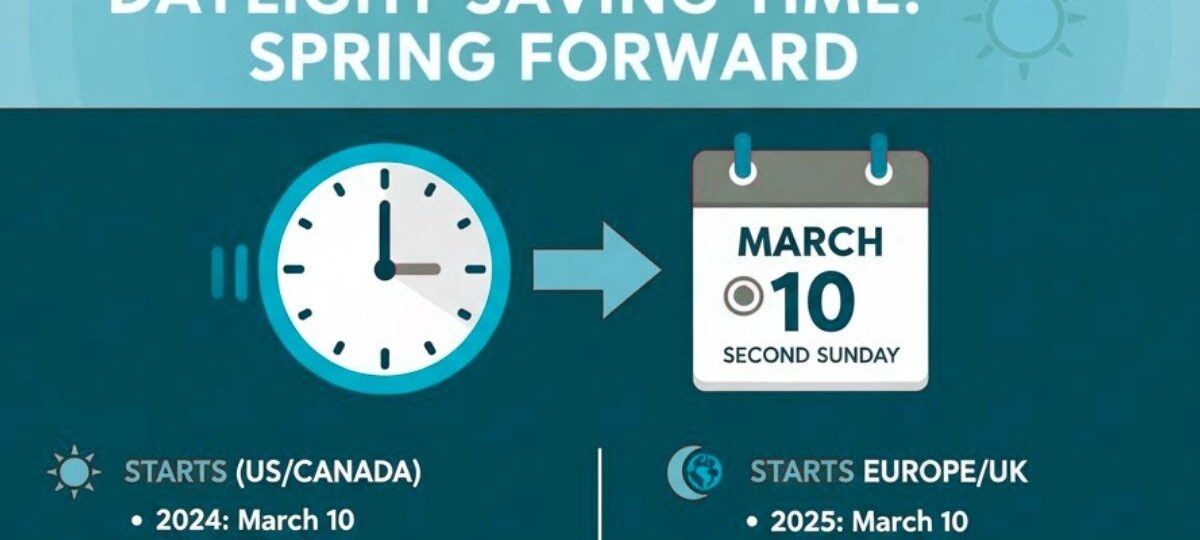The phrase “spring forward” is a familiar, if slightly dreaded, one for millions around the globe. It heralds the start of Daylight Saving Time (DST), an annual event that officially shifts our clocks and schedules to maximize the use of sunlight during the sun-drenched months. If you’ve ever found yourself confused about when exactly this time warp occurs, you’re not alone.
Understanding the mechanics, history, and timing of DST is key to navigating the transition smoothly. For most of the United States and Canada, the start of Daylight Saving Time is a fixed date, codified by federal law. The Definitive Start Date: Springing Forward
The Definitive Start Date: Springing Forward
In the vast majority of U.S. states and Canadian provinces that observe the practice, Daylight Saving Time begins on the second Sunday in March.
This date is when local standard time at 2:00 a.m. instantly becomes 3:00 a.m., effectively “stealing” an hour of sleep but rewarding us with an hour of extra daylight at the end of the day.
For a clearer perspective, here are the recent and upcoming start dates for DST in the US and Canada:
| Year | DST Starts (Second Sunday in March) | Action |
| 2024 | March 10 | Clocks move forward 1 hour |
| 2025 | March 9 | Clocks move forward 1 hour |
| 2026 | March 8 | Clocks move forward 1 hour |

International Variations: The European Start
The start date for Daylight Saving Time—often called Summer Time—differs across continents. In European countries, including the UK, the clock change is based on the last Sunday in March.
For instance, while the US and Canada sprang forward on March 9th in 2025, the UK and most of Europe shifted their clocks on Sunday, March 30th, 2025.
Why Do We Even “Save” Daylight? The Historical Rationale
The history of DST is rooted in a desire to align waking hours with natural light to save on resources.
While Benjamin Franklin famously proposed the idea of waking up earlier to save on candle wax in 1784, the modern push for DST truly began in the early 20th century.
- Wartime Energy Savings: The first widespread national adoption of DST occurred in Germany in 1916 during World War I, and was quickly followed by other combatant nations, including the United States. The primary goal was to conserve coal and fuel needed for the war effort by reducing the civilian demand for artificial lighting in the evenings.
- Maximizing Evening Light: The core concept is shifting an hour of daylight from the early morning (when most people are asleep) to the evening (when people are active). Proponents argue that this extended evening light encourages outdoor recreation, boosting retail and leisure economies, and even improving road safety by reducing the duration of the evening rush hour in darkness.
The current DST schedule in the U.S. was most recently extended by the Energy Policy Act of 2005, moving the start date three weeks earlier (from the first Sunday in April to the second Sunday in March) and the end date one week later.
The Great Debate: Pros, Cons, and the Future of DST
Despite its long history, the biannual clock change remains one of the most controversial public policies. The question of when DST starts is inherently tied to the debate over whether it should exist at all.
The Costs: Circadian Rhythms and Energy Savings
- Health Impacts: Critics point to the disruption of the circadian rhythm—our natural biological clock—caused by the “spring forward.” Studies suggest a temporary increase in negative health events, like heart attacks and traffic accidents, in the days following the switch due to sleep deprivation.
- Questionable Energy Savings: In the modern era, the energy savings from DST are heavily debated. Any reduction in lighting use may be offset by increased energy consumption from air conditioning during the longer, warmer evenings, or the consistent use of electronics that are not dependent on natural light.
The Movement for Permanence
The persistent disruption and confusion have fueled a movement to adopt permanent time. In the U.S. Senate, the Sunshine Protection Act has been repeatedly introduced, seeking to make Daylight Saving Time a year-round, fixed standard. The main goal of this legislation is to eliminate the twice-yearly clock change entirely.
However, the scientific community and sleep experts often advocate for Permanent Standard Time, arguing that this alignment is closer to our natural biological clock and would provide safer, brighter morning commutes.
Who Doesn’t Change Their Clocks? Opt-Out Regions
Not every area adheres to the “spring forward” rule. This lack of uniformity only adds to the scheduling complexity:
- In the United States, the states of Arizona (except the Navajo Nation) and Hawaii do not observe Daylight Saving Time. They remain on Standard Time year-round.
- Globally: Many countries near the equator do not participate because their day length variations are minimal. Major regions that skip DST include most of Asia, Africa, and parts of South America.
Key Takeaway for the Next Time Change
To simplify the question, just remember this easy phrase:
“Spring forward, Fall back.”
You lose an hour of sleep in the Spring (March), and gain it back in the Fall (November).
In summary, for most people in North America, Daylight Saving Time starts on the second Sunday in March at 2:00 a.m. local time. While the debate over the relevance and cost of this time shift continues, knowing the schedule is the first step in being prepared for the annual daylight switch.
Need to Know When DST Ends?
If you’re wondering when you get your hour of sleep back, Daylight Saving Time ends on the first Sunday in November.
Ready for the next change? Would you like a reminder set for the upcoming “fall back” date?
See Also: Optimum Advantage Internet: Unlock Plans & Eligibility Now










